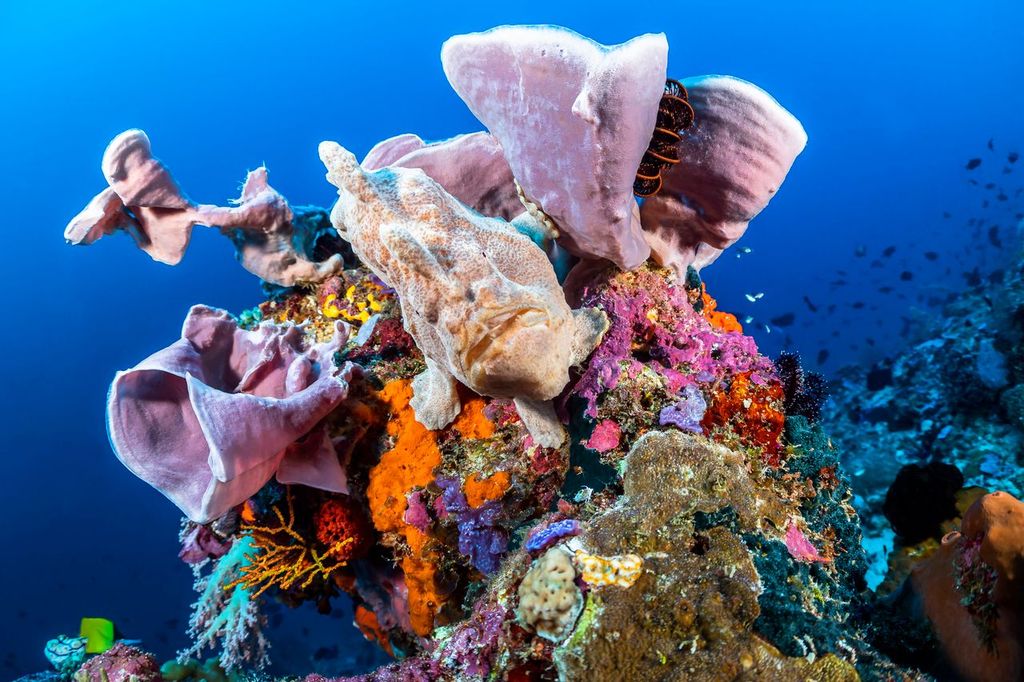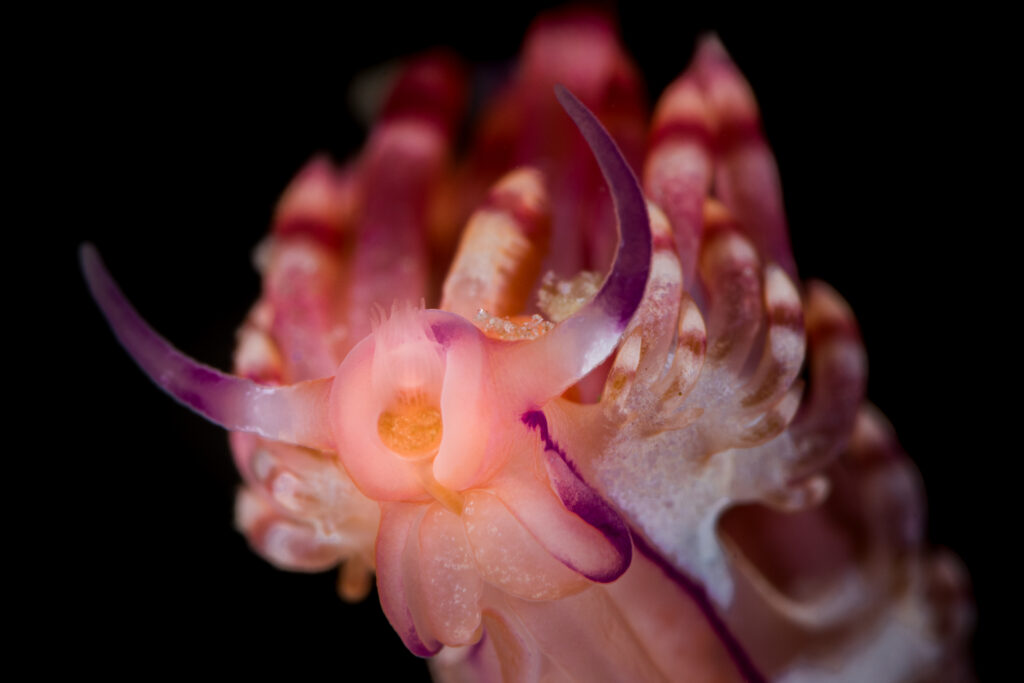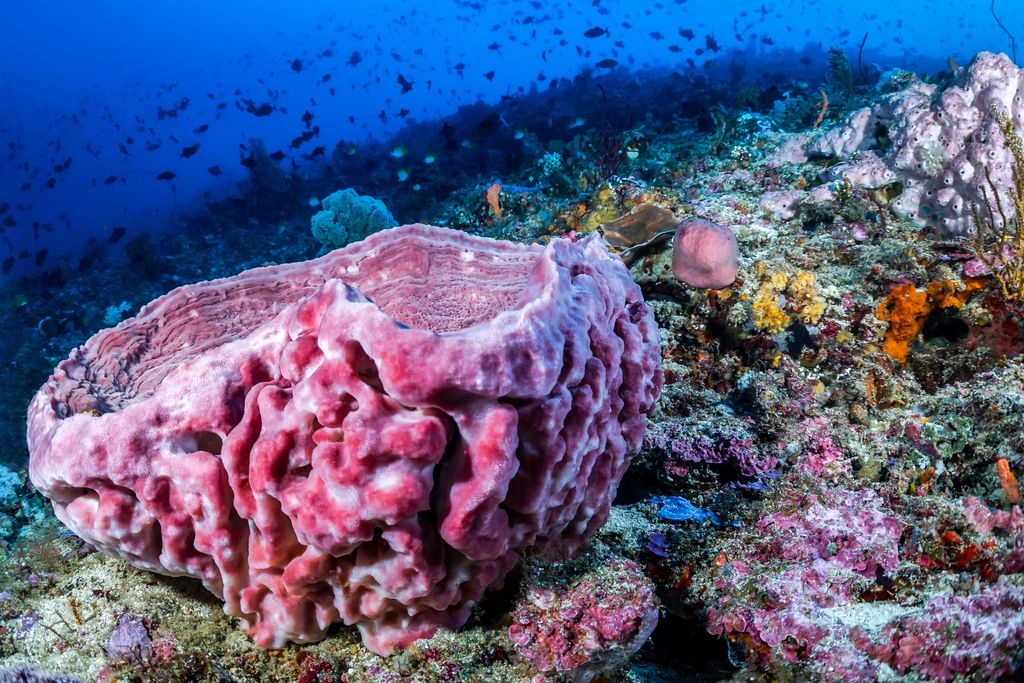Think back to your last dive. What’s the first image that comes to mind? A majestic manta ray gliding past? We often remember the big, impressive encounters. But what if the most fascinating universe was hidden in plain sight, on a single piece of coral or a blade of seagrass?
With macro diving, you get to shift your focus from the big creatures to the tiny details of the ocean. Instead of the open ocean, you spend most of your time around the coral reefs, looking for unique-looking sea critters that might be as small as your fingernail.
Curious as to how you can do this type of diving? This article breaks down everything a beginner needs to know, from what kind of sea critters you can find, gears to use, and top destinations!
What is Macro Diving?

Macro diving is a type of scuba diving that focuses on finding and observing small marine creatures, often less than a few centimeters long. The name itself comes from ‘macro photography’, where photographers use special lenses to capture fine details of tiny subjects.
While you don’t need a camera to enjoy macro diving, the principle is the same: to get a magnified, detailed view of these creatures.
So, how is this different from your typical reef dive? A regular dive might involve swimming along a vast stretch of wall, looking out for large creatures like turtles or sharks. In contrast, macro divers move slowly along coral rubble, sponges, and sandy patches to find sea critters.
You might be surprised where the best macro life is found. Many of the most sought-after critters live in unique environments, such as volcanic sand slopes, seagrass beds, and shallow lagoons. Places rich in biodiversity and healthy ecosystems tend to offer the best macro encounters.
What Can You See When Macro Diving?

One of the joys of macro diving is discovering how much life hides in the smallest corners of the ocean. Once you slow down and look closely, a world of color and character unfolds before your eyes.
Here are some of the fascinating creatures you might encounter:
- Nudibranchs: Nudibranchs are tiny, colorful sea slugs that come in all sorts of shapes and patterns. Some of them are masters at camouflaging, while others have bright colors that serve as a warning to predators.
- Frogfish: A fish that uses camouflage to ambush unsuspecting prey. Blending into sponges and coral, they use a lure-like appendage to attract prey before striking.
- Pygmy Seahorses: One of the smallest marine creatures in the world, this seahorse often hides among sea fans. Spotting one is a true test of patience and a highlight for any diver.
- Shrimps and Crabs: From cleaner shrimps to hairy squat lobsters, many crustaceans use color and camouflage to stay hidden.
- Octopus and Cuttlefish: Some macro diving sites are home to small cephalopods like mimic or blue-ringed octopuses that show unique behavior and color changes.
Each dive offers something different. Once you train your eyes to notice these details, even the most familiar sites start to feel brand new.
Essential Macro Diving Equipment

A successful macro dive depends on having the right setup. You don’t need a lot of specialized equipment to get started, but choosing the right pieces can make a significant difference in comfort, control, and visibility underwater.
Below are some essentials to consider before your next dive:
1. Dive Pointer or Muck Stick
A dive pointer, also known as a muck stick, is a thin rod (usually made of aluminum or stainless steel) with a wrist lanyard. It is an invaluable tool for macro diving.
You can use it to anchor your position gently on a sandy or rubble patch, which helps you stay steady without using your hands or kicking up sediment. It is also perfect for safely pointing out tiny creatures to your dive buddy without having to get too close.
Remember to never touch, poke, or disturb marine life with it.
2. Magnifying Glass
If you’re not carrying a camera, an underwater magnifying glass is a fantastic accessory. It allows you to see the intricate details and features of tiny sea creatures. Seeing these creatures up close can surely enhance the experience and help you appreciate the complexity of their forms.
3. Dive Torch or Light
Many macro critters live in crevices or under ledges, and their brilliant colors are often lost at depth. A good dive torch brings back the vibrant reds, oranges, and purples that water absorbs.
It illuminates dark spaces, helping you spot hidden creatures and revealing their true beauty. Even on a bright, sunny day, a torch can make the difference between seeing a brown blob and a stunningly patterned animal.
4. The Right Camera Setup (Optional)
If you are interested in photography, a dedicated macro setup is key. This usually involves a camera with a macro lens that allows for 1:1 magnification, capturing subjects at their true life-size on the sensor.
To get sharp, colorful images, you will also need one or two external strobes. Strobes provide the necessary light to freeze motion and eliminate the blueish tint of the water, making your tiny subjects pop.
Macro Diving Tips for Beginners

Ready to start your own underwater treasure hunt? Shifting your focus from the big picture to the tiny details requires a few adjustments in how you dive. These tips will help you spot more critters and protect the delicate environments they call home.
1. Master Your Buoyancy
Excellent buoyancy is the most important skill in macro diving. Since you will be hovering close to the seabed, maintaining a stable, neutral position is essential. This prevents you from accidentally kicking up sand or silt, which can ruin visibility and disturb fragile habitats.
Practice a horizontal trim and use gentle frog kicks to move without disturbing the bottom. Good buoyancy allows you to get close for observation without ever touching anything.
2. Embrace the Slow Pace
Macro diving is about thoroughly exploring a small area. Pick a single coral head, a small patch of rubble, or a section of seagrass and spend several minutes observing it from different angles. The less you move, the more you see.
Marine life is also more likely to go about its business if you are calm and still. Patience is your best tool for spotting well-camouflaged animals.
3. Train Your Eyes to Spot Anomalies
Spotting tiny creatures is a skill that develops over time. Start by looking for things that seem out of place: an unusual shape, a texture that does not match its surroundings, or a pair of eyes looking back at you.
It helps to do a little research beforehand. If you know that a certain type of shrimp lives on a specific anemone, you will know exactly where to focus your attention. A good dive guide is also invaluable for pointing out things you might otherwise miss.
4. Be a Respectful Visitor
The golden rule of macro diving is to look but never touch. These small creatures and their habitats are incredibly fragile. Be constantly aware of your fins, gear, and camera so you do not make contact with coral or other organisms.
If you use a muck stick, only place its tip on bare sand or dead rubble to steady yourself. Think of yourself as a guest in their home, observing quietly and leaving everything exactly as you found it.
Top Macro Diving Destinations

Looking for the world’s best macro diving destinations to spot rare and colorful critters? While you can encounter tiny marine life on almost any dive, some locations have become legendary for their incredible biodiversity and density of macro species.
The Coral Triangle remains a global hub for this kind of diving, but excellent macro hotspots can be found across Asia, the Pacific, and even the Americas.
Some of the best macro diving destinations include:
- Lembeh Strait, Indonesia
- Ambon, Indonesia
- Tulamben, Bali
- Anilao, the Philippines
- Malapascua, the Philippines
- Dauin, the Philippines
- Sea of Cortez, Mexico
- Milne Bay, Papua New Guinea
- Mabul, Malaysia
- Mafia Island, Tanzania
Discover Macro Diving with Solitude World

Feeling inspired to start your own underwater treasure hunt? While learning to spot tiny critters is a rewarding skill, diving with an expert guide can greatly enhance your experience, especially on your first few macro diving trips.
At Solitude World, we specialize in revealing these hidden underwater universes in the world’s best macro hotspots, including Lembeh, Indonesia, and Anilao, Philippines. Our local dive guides are experts at spotting camouflaged creatures that most divers swim right past.
If you are ready to explore the small wonders of the ocean, explore our dive resorts and liveaboards to begin your next macro adventure.
What are you waiting for? Book your stay at Solitude Liveaboards and Resorts today!